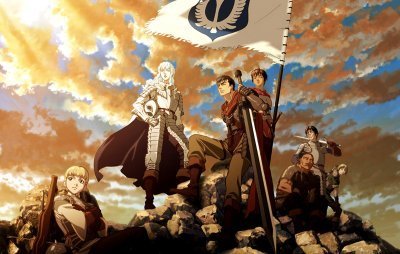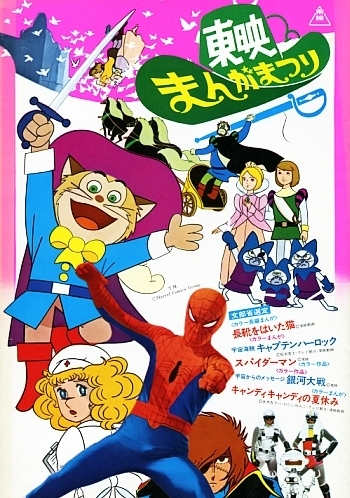Jonathan Clements's Blog, page 7
November 9, 2012
Japan Crazy
 When the future Admiral Togo was a young cadet in Britain, he spent several months in the company of a homestay family. His arrival caused great disappointment to the youngest boy in the Capel family, who had assumed that if Togo came from Japan, he must surely be an acrobat? Certainly, he must have been a friend of the most famous Japanese man among British youth, a circus performer known as Little All Right? The stoic Togo, already a veteran of the Japanese civil war, gruffly denied any association with jugglers or plate-spinners, and that was that.
When the future Admiral Togo was a young cadet in Britain, he spent several months in the company of a homestay family. His arrival caused great disappointment to the youngest boy in the Capel family, who had assumed that if Togo came from Japan, he must surely be an acrobat? Certainly, he must have been a friend of the most famous Japanese man among British youth, a circus performer known as Little All Right? The stoic Togo, already a veteran of the Japanese civil war, gruffly denied any association with jugglers or plate-spinners, and that was that.
But who were the Japanese Imperial Troupe? There was, indeed, such a group, although if either the Shogun or Emperor had ever heard them described as “Imperial”, they would have had conniptions. The Troupe’s impresario, “Professor” Richard Risley Carlisle, was a hard-up strongman who introduced the Japanese to Western circus traditions in 1864. Realising that the newly opened land of Japan had its own performers and trickery, Risley pulled all the strings he could in order to bring a platoon of Japanese entertainers to the West, getting a motley crew of itinerants to sign away their lives for him in a contract that would take them literally around the world. The first-ever civilian passports granted by the Japanese government were given to Risley’s performers, a fractious, occasionally drunken and regularly licentious bunch of rascals who back-flipped, juggled and caroused their way throughout Europe and America.
Frederik L. Schodt’s account of this landmark event, Professor Risley and the Imperial Japanese Troupe, argues for it as the first flowering of japonisme, in which these unlikely blue-collar ambassadors from the mysterious land of Japan brought a highly unrepresentative and oft-misunderstood series of performances to a cluster of industrial towns, from the mills of Wakefield to the mines of Wales. Pursued by creditors, scandal and intrigue, the Imperial Japanese Troupe became many Europeans’ first-ever encounter with things Japanese; they sang old Kyoto songs in the Wild West, and got into bar-room brawls in Piccadilly…. Schodt mines the Troupe’s own diaries, contemporary newspapers, theatre reviews and even court reports in order to unearth a truly globe-trotting adventure, which prods the underbelly of Victorian society, and whispers the first strains of The Mikado, Madame Butterfly and other Western obsessions with the east. He presents the Imperial Japanese Troupe as the first true Japan craze, but does so with an incredible sense of place and time, dragging the reader into a narrative of carnival barkers and gasping crowds, spectacular entertainments and forgotten celebrities. An amazing work of scholarship, and an incredible feat of literary plate-spinning. Roll up, roll up…
Jonathan Clements is the author of Admiral Togo: Nelson of the East.
November 7, 2012
Steampunk
 Out today, Brian Robb’s new book Steampunk: Victorian Visionaries, Scientific Romances and Fantastic Fictions, notable among a slew of lesser works on the sub-genre by devoting a whole chapter to its Japanese manifestations, which include Japan-only spin-offs from the John Carter series, Rhett Butler running guns to the Shogun, Emily Bronte in a time machine, and a novel called simply Steampunk! which has trains in it. And dinosaurs. Another possibility for your Christmas stocking, perhaps…?
Out today, Brian Robb’s new book Steampunk: Victorian Visionaries, Scientific Romances and Fantastic Fictions, notable among a slew of lesser works on the sub-genre by devoting a whole chapter to its Japanese manifestations, which include Japan-only spin-offs from the John Carter series, Rhett Butler running guns to the Shogun, Emily Bronte in a time machine, and a novel called simply Steampunk! which has trains in it. And dinosaurs. Another possibility for your Christmas stocking, perhaps…?
Quoth the blurb: “Simultaneously a literary movement, ultra-hip subculture and burgeoning cottage industry, Steampunk is the most influential and arresting new genre to emerge from the late twentieth century. Spinning tales populated with clockwork Leviathans, cannon-shots to the moon and coal-fired robots, it charts alternative histories in which the British Empire never fell or where the atom remained unsplit. A term first coined in 1987 by science fiction author K.W.Jeter, Steampunk was born of myriad influences: the classic scientific romances of Jules Verne, H.G. Wells and Mary Shelley, a growing nostalgia for Victoriana and an ironic reaction to the dystopian futurescapes of Cyberpunk. Today it has grown to become a global aesthetic, making its mark on art, architecture, fashion and even music. This wide-ranging, beautifully-illustrated and much needed history explores the genre’s many intricate expressions, tracing its development in fiction, cinema, television, comics, videogames and beyond. From the futuristic visions of Fritz Lang and the otherworldly imaginings of Alan Moore and Hayao Miyazaki, to Doctor Who’s adventures in time and space and the dark fantasies of China Miéville, Brian J. Robb sets the key works of Steampunk squarely under the lens of his brass monocle, examining their ideas and themes in forensic detail.”
November 1, 2012
Bait & Switch
 This month’s fun anime news – the removal of the Japanese language track from the American release of Persona 4. The reason can be found by anyone if they start poking around the sales figures for Japanese animation in its home market. The first episode of Persona 4 sold over 40,000 copies in Japan, but after that, sales settled down. Reading between the statistics, Persona 4 has about 6,000 Japanese fans who bought the whole set on DVD, and another 10,000 fans who bought it on Blu-ray. But owning the complete Japanese set of the first season would set you back £420 in Japan. That makes the English-language release about 80% cheaper, and puts the producers in deep fear of reverse-importing.
This month’s fun anime news – the removal of the Japanese language track from the American release of Persona 4. The reason can be found by anyone if they start poking around the sales figures for Japanese animation in its home market. The first episode of Persona 4 sold over 40,000 copies in Japan, but after that, sales settled down. Reading between the statistics, Persona 4 has about 6,000 Japanese fans who bought the whole set on DVD, and another 10,000 fans who bought it on Blu-ray. But owning the complete Japanese set of the first season would set you back £420 in Japan. That makes the English-language release about 80% cheaper, and puts the producers in deep fear of reverse-importing.
So far, there has been no indicator that the British release of Persona 4 will be similarly affected. Territorial lockout, once a bugbear for British fans, might turn out to be a saviour on this occasion, as UK Blu-rays are no longer in the same region as Japanese ones. However, if this becomes a general trend, the Japanese animation business risks shooting itself repeatedly in the foot.
There are several possible answers to this problem, none of which you are going to like. One would be to make everybody pay Japanese prices, which would kill off the UK Blu-ray business. Another would be to bring Japanese prices down to foreign levels, which would kill off many niche-interest anime serials. Leaving the Japanese language track off the foreign release, however, is not a solution, either. A sizeable chunk of foreign fandom likes anime because it is Japanese. For ten years, the dual audio tracks of DVDs have largely obscured this subset of fandom, but I, for one, have never bought a dubbed anime, except when the dub comes attached to a DVD I’m buying anyway.
Removing the Japanese-ness from a foreign anime release will scare off many buyers, but surely the Japanese already know this? Which leads me to suspect that foreign rights, in general, for some companies have become little more than a bait-and-switch con, designed not to sell the product, but to keep a studio’s “foreign rights” department looking busy. Japanese producers: say it isn’t so!
Jonathan Clements is the author of Schoolgirl Milky Crisis: Adventures in the Anime and Manga Trade. This article first appeared in NEO #103, 2012.
October 31, 2012
Looper
October 26, 2012
Cold Shoulder
Another month, another anime industry strop – this time with Aloha Higa actually suspending her own manga, Polar Bear Café, in protest at her treatment by her publishers. Her grievance is that she hasn’t seen a penny for the anime adaptation, and discovered that editors were signing off on approvals without even telling her.
To play devil’s advocate for a moment, there are a lot of manga artists who would love it if someone took away all the drudgery. She can get on with drawing the manga, and leave the “What colour hat works best” nonsense to some studio underling. Even so, that’s no excuse for discovering that one’s name is on a TV show before any money has hit the bank account.
Interestingly, one of her complaints is the sort of thing that might have easily been settled over a cup of tea and a slice of cake. Higa doesn’t like the fact that the anime version of her titular bear only has four fingers. This is, I am sure, a deliberate decision by the animators, dating back to received wisdom from the distant past, when Disney and Tezuka both agreed that in animation, four fingers looks like five at a glance, whereas five fingers looks like six. The animators could have probably demonstrated that for her, and she could have made her case the other way. But now it’s all gone sour, as she discovers that the animators have been assuming that she has approved scripts that she has never even seen.
Polar Bear Café may well be a one-note joke, but it belongs to Aloha Higa. It’s hers to do with as she pleases. And perhaps she fears, as do all creatives, that this might be her fifteen minutes in the spotlight. So if she wants to tell the anime company how to draw her characters; this might be the one time in her life when she gets to do that. Imagine how she’d feel if Polar Bear Café came and went on-air, before she had the chance to influence so much as a single brushstroke. So, good for her for giving her publishers the cold shoulder. The icy atmosphere led to a swift apology, and, hopefully a thaw in relations… [That’s enough – Ed.]
Jonathan Clements is the author of Schoolgirl Milky Crisis: Adventures in the Anime and Manga Trade. This article first appeared in NEO #101, 2012.
October 22, 2012
Festivals and Preserving Film
 The Manga UK podcast is back for its ninth episode, in which Jeremy Graves heads for Glasgow to talk with Andrew Partridge of Scotland Loves Anime, Hugh David, formerly of ADV Films, and Jonathan Clements of Schoolgirl Milky Crisis about film festivals, Japanese premieres and the drama of bringing old television shows back to life.
The Manga UK podcast is back for its ninth episode, in which Jeremy Graves heads for Glasgow to talk with Andrew Partridge of Scotland Loves Anime, Hugh David, formerly of ADV Films, and Jonathan Clements of Schoolgirl Milky Crisis about film festivals, Japanese premieres and the drama of bringing old television shows back to life.
01:00 What does Scotland Loves Anime have to do with swans? The perils of scheduling a film premiere only three days after the Japanese finish making it. Includes the terms: “human playthings”, “community” and “Volkswagen.”
07:00 Last week’s Edinburgh University symposium on soft power and Cool Japan last week, and the controversial revelations of Shinji Oyama. 15:00 The Glasgow Film Theatre and the atmosphere therein. Comparisons with Fright Fest and Sci-Fi London. Takashi Miike and Ace Attorney. Hidden messages in K-on. Includes the words “can of worms,” “transvestites,” and “dog poo.”
 27:00 The Judge’s Award and jury management. The long-term effects of Anime UK magazine. The Berserk movies, worldbuilding and fantasy adaptations. K-on the Movie and the spectacle of London. Naoko Yamada and the research that went into the film. Includes the words “bummed,” “balloons” and “retro-Nazi mutants.”
27:00 The Judge’s Award and jury management. The long-term effects of Anime UK magazine. The Berserk movies, worldbuilding and fantasy adaptations. K-on the Movie and the spectacle of London. Naoko Yamada and the research that went into the film. Includes the words “bummed,” “balloons” and “retro-Nazi mutants.”
40:00 Hugh David, formerly of ADV Films, discusses the trials and tribulations of film restoration at Network DVD. The phasing-out of film and its impact on archives and retrospectives. Why has there never been a dub of the original Gunbuster? Why do archivists put tapes in the oven? Macross Plus and its unexpected function as an ashtray. Censored footage in Rock & Roll Cop and From Russia With Love. Shooting “day for night” and the colour-timing of James Bond movies. Includes the words “electrodes,” “sympathy” and “Nigella.”
61:00 Ask Manga UK. Twinings Tea adverts and their role in anime history. Hiroyuki Yamaga’s advice on becoming a film director. The unlikely connection between Goodfellas and Schindler’s List. An unexpected appearance by Jeremy’s boss Jerome Mazandarani (or is it…?). The resale value of digital media. Include the words “Hitler,” “iTunes,” and “daggers.”
Available to download now, or find it and an archive of previous shows at our iTunes page. For a detailed contents listing of previous podcasts, check out our Podcasts page.
October 17, 2012
Event Horizons
 The Toei “Manga Matsuri” or “Cartoon Festivals” began in 1964, and lasted until the 1990s. At spring or summer vacations, kids would pile into their local cinema for a 200-minute programme of anime. There would be a movie re-edit of a TV series, and a couple of episodes from whichever shows were the flavour of the moment – a big deal in an age when many kids lacked colour tellies, and nobody had a video recorder. The Cartoon Festival, and its Toho rival, the “Champion Festival”, must have been welcome reliefs to hard-pressed parents, as at least they got rid of the rugrats for a few hours in the holidays. In the anime world, they were an ideal way of burning off all the dross lying around in the studio bins – aborted pilots and 15-minute apprentice pieces, shoved into the programmes like animated ballast. Every now and then, they also sneaked in something classier like Puss in Boots.
The Toei “Manga Matsuri” or “Cartoon Festivals” began in 1964, and lasted until the 1990s. At spring or summer vacations, kids would pile into their local cinema for a 200-minute programme of anime. There would be a movie re-edit of a TV series, and a couple of episodes from whichever shows were the flavour of the moment – a big deal in an age when many kids lacked colour tellies, and nobody had a video recorder. The Cartoon Festival, and its Toho rival, the “Champion Festival”, must have been welcome reliefs to hard-pressed parents, as at least they got rid of the rugrats for a few hours in the holidays. In the anime world, they were an ideal way of burning off all the dross lying around in the studio bins – aborted pilots and 15-minute apprentice pieces, shoved into the programmes like animated ballast. Every now and then, they also sneaked in something classier like Puss in Boots.
I’ve always found the Cartoon Festivals interesting because they turned anime into “events”. This wasn’t about watching TV with one eye while slurping your breakfast; it was a grand day out, and the chance to be fans together.
I was, however, a little baffled by the news that Toei was releasing the Cartoon Festival programmes on Japanese DVD this August. Historically, it’s fascinating: a chance to experience these forgotten moments of anime enjoyment just as the ten-year-olds of 1968 or 1970. Although probably in your own home, without 500 other screaming children making it difficult to hear anything. But in terms of straightforward entertainment, how many people do Toei really expect to fork out their £40 asking price? In some cases, it will literally be the only way you can get to see obscure cartoons like the 60-minute 30,000 Miles Under the Sea (1970) or the 25-minute Hitoribotchi (1969), designed to sell Toyota cars to squirrels. But is that really going to be enough to pull in the punters? I doubt we’ll see this in the UK, although it would be nice to give it a whirl… what about a one-night-only performance, including 1970s Japanese cinemas ads…?
Jonathan Clements is the author of Schoolgirl Milky Crisis: Adventures in the Anime and Manga Trade. This article first appeared in NEO #102, 2012.
October 14, 2012
From Naoshima with Love

My article on the Japanese adventures of James Bond is up online now on the Manga UK. Did you know there was a James Bond museum on Naoshima…?
October 11, 2012
Animespotting

Yes, that appears to be a manga-style Mel Gibson, riding a giant mutant haggis.
October 10, 2012
Nakama Britannica

The folks over at Nakama Britannica have moved heaven and earth to get their podcast interview with me, Jonathan Clements, out in time for Scotland Loves Anime. If you’re at all interested in the history and direction of the anime industry, there is a lot of information in here, real-world statistics and behind-the-scenes gossip. You can download the podcast here.
0:00 The loss of Schoolgirl Milky Crisis, the great unseen anime, disappeared from the record in an unfortunate boating accident. Scotland Loves Anime — the logistics of getting Japanese guests to Glasgow. And a quick plug for my latest book, the new translation of the Art of War.
10:00 What is anime? Nowhere near as dull a question as it sounds, leading to all sorts of gossip about the battle for anime’s soul between the spirits of Osamu Tezuka and Hayao Miyazaki. Includes the words: “Communists”, “witchhunts” and “crappy”.
20:00 Anime as Soft Power. The size of otakudom. The meaning of TV ratings. How anime form follows function. How much is the anime business worth? Includes the words: “chimpanzee”, “over-engineering” and “popular”.
30:00 What is a silver otaku? The impact of Heidi and Yamato.The phenomenology of fandom and misremembering Evangelion and Gundam. The influence of Tadao Nagahama and Yoshiyuki Tomino. Includes the words “pander”, “toss” and “Aznable”.
40:00 Traditional concepts of storytelling, and how unlikely you are to find them. How “traditional” was the Hakkenden. The ethics of tying anime directors to chairs and slapping them. Noh drama and Gasaraki. Jinzo Toriumi’s Introduction to Anime Scenario Writing. Includes the words: “fallacy”, “posh” and “pervy”.
47:00 Wimmin. Do 125 million Japanese people all like hentai? The demographics of female anime fans and the birth of Noitamina. Fujiko Mine and the line between sexy and sexist. The role of women within the anime industry. Includes the words: “mind bleach”, “boobs” and “jellyfist”.
57:00 The chivalry of chauvinism and its impact on anime staff rosters. The evolutionary role of colour recognition. Women in powerful positions, like CLAMP. Includes the words: “xerography”, “concordance” and “primal.”
67:00 Aloha Higa and the unpleasantness over Polar Bear Cafe. How many fingers am I holding up? Includes the words: “sod off”, “Disney”, and “torpid”.
69:00 The nature of originality: giant robots and schoolgirl witches. Downton Abbey the anime, and what a production committee might do to it. Creativity within limits. Includes the words: “tropes”, “Metallica” and “Minovsky particles”.
73:00 Three trends for the future: Kickstarter, mobiles and China. The size of the informal anime market. Issues for intellectual property. What’s changed in Sino-Japanese relations since the publication of the Dorama Encyclopedia. Includes the words: “crowd-sourcing”, “Margaret Thatcher cyborg”, and “sandwich-making”.
84:00 The Death Note backlash in north-east China. Cosplay in China. And goodbye. Includes the words “boobs” and “grabbed”.
Jonathan Clements's Blog
- Jonathan Clements's profile
- 123 followers



